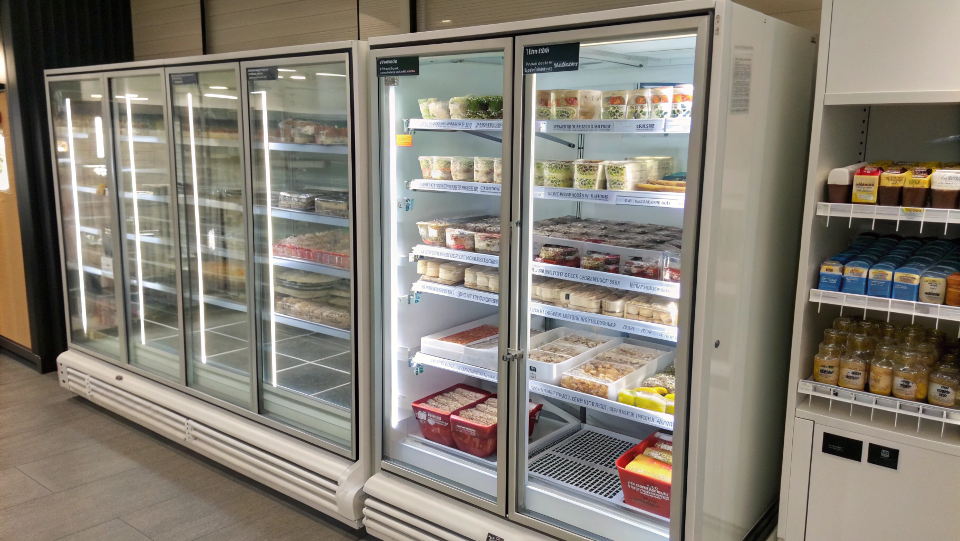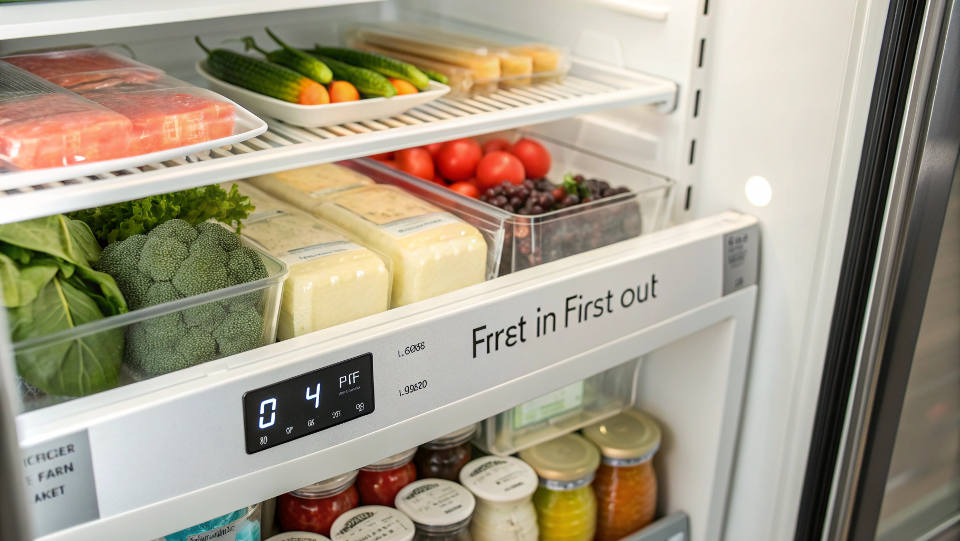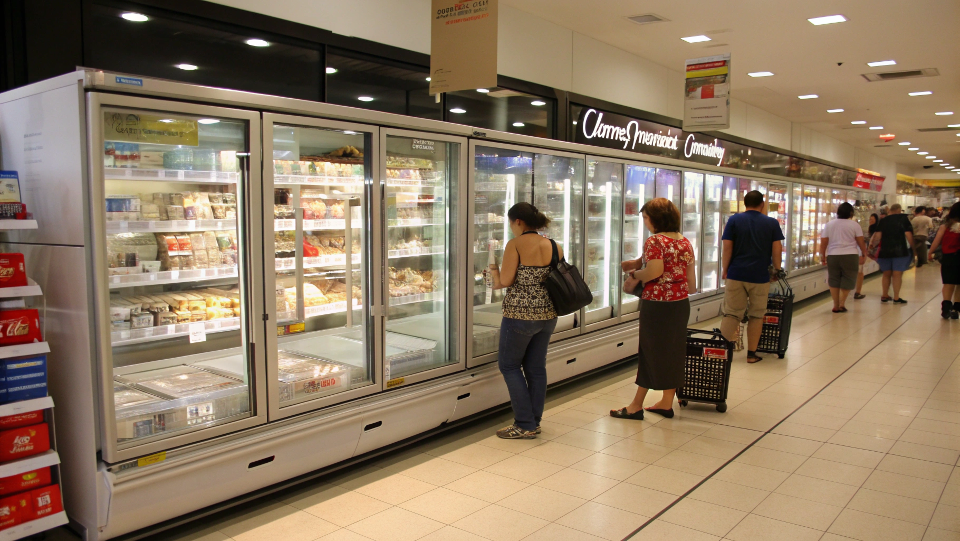Are your retail floorspace costs soaring? Cramped for space but want to offer cold drinks and snacks? A poor layout means you are leaving money on the table every single day.
Compact refrigerators are the perfect solution. They leverage unused vertical space, fit neatly on or under counters, and turn checkout lines into high-profit zones. This allows retailers to introduce lucrative, high-margin chilled products without sacrificing valuable floor space.
I've seen firsthand how the right equipment can transform a business. In my years running a refrigerator factory, I've helped countless owners like you find clever ways to grow. A compact fridge might seem like a small addition, but its impact on your bottom line can be huge if you use it correctly. It’s not just about cooling things; it’s about creating new sales opportunities in spots you never even considered. Let’s dive into how you can make every square inch of your retail space work harder for you.
How to optimize fridge space?
You got a compact fridge, but now it looks stuffed and messy. Customers can't see the products, and your staff struggles to restock it. This disorganization is costing you sales.
To truly optimize the space, you need a strategy. Use adjustable shelving for different product heights, place best-sellers at eye level, and use clear organizers. This creates an attractive, easy-to-navigate display that encourages customers to grab and go.

When you get a product from a factory like mine, the inside is a blank canvas. How you fill it makes all the difference. I always tell my clients, like Alex, that thinking about the internal layout is just as important as the external design. Merely stocking a fridge is not enough; you must merchandise it for maximum profit.
Maximize Vertical Real Estate
Most people only think horizontally, but in a compact space, vertical is your best friend. I advise my clients to request adjustable shelves. One week you might have a promotion on short energy drink cans, and the next on tall iced tea bottles. Adjustable shelves give you the flexibility to adapt without wasting space. A shelf that is too high for the product below it is just empty, wasted air that could be holding more inventory.
The Power of In-Store Placement
Where you put the entire unit in your store is critical. Each location serves a different purpose, and choosing the right one depends on your goal. I helped a convenience store owner decide on this, and we mapped out his options.
| Placement Area | Pros | Cons | Best for... |
|---|---|---|---|
| Countertop | High visibility, easy access | Takes up valuable counter work space | New items, special promotions, impulse buys |
| Under-counter | Frees up counter space, clean look | Lower visibility for customers | Extra stock, less popular items, staff-served items |
| Near Checkout | Highest rate of impulse buys | Can create bottlenecks and congestion | High-margin sodas, candy, and snacks |
Organization is Profit
Inside the fridge, a little organization goes a long way. I once worked with a client who added simple spring-loaded shelf pushers to his fridges. His sales of bottled water went up nearly 15%. Why? Because the display always looked full, neat, and professional. The next bottle was always at the front, ready to be grabbed. Clear bins are also great for grouping smaller items like yogurt cups or cheese sticks. It keeps the fridge tidy and helps your team see what needs restocking at a glance.
How can a refrigerator be used to store food successfully?
You want to sell fresh sandwiches or dairy, but you're worried about spoilage. Poor food storage could make customers sick and destroy the reputation you've worked so hard to build.
Successful food storage depends on two things: consistent temperature and proper rotation. Keep the fridge below 40°F (4°C) and use the "First-In, First-Out" (FIFO) method. This ensures every item you sell is safe, fresh, and high-quality.

Let me be direct. When it comes to storing food for sale, there are no shortcuts. As a manufacturer, the single most important component I focus on is the compressor. It's the heart of the refrigerator. A cheap, unreliable compressor that can’t maintain a steady temperature is a liability. It's the difference between selling a fresh, delicious product and dealing with a costly, dangerous health code violation. For anyone selling food, investing in a unit with a high-quality compressor is non-negotiable.
Temperature is King
The number one rule is keeping the internal temperature below 40°F or 4°C. This is the "danger zone" where bacteria can multiply rapidly. Don't just trust the dial; use a separate refrigerator thermometer placed in the middle of the unit. Check it daily. Also, be mindful of air circulation. A fridge that is crammed too full will have warm spots because the cold air can't move around. I always remind people to leave a little space between items.
Mastering the FIFO System
FIFO stands for "First-In, First-Out." It’s a simple system to ensure older stock is sold before newer stock. When you restock the fridge, you must move the existing products to the front and place the new delivery behind them. This simple habit drastically reduces spoilage and waste. It ensures your customers always get the freshest product available. It takes a little discipline from your staff, but it saves so much money in the long run.
What to Store Where?
Different products have slightly different needs. While the whole fridge should be cold, some areas are colder than others, like the back and bottom.
| Product Type | Ideal Temperature Zone | Storage Tips |
|---|---|---|
| Canned & Bottled Drinks | 3-5°C (38-41°F) | Can be stored anywhere, even the door. |
| Packaged Sandwiches/Salads | 1-4°C (34-40°F) | Store on middle shelves. Check "use-by" dates daily. |
| Yogurt/Dairy | 1-4°C (34-40°F) | Keep near the back of a main shelf where it's coldest. |
| Fresh Juices | 2-5°C (36-41°F) | Avoid the door, as temperature fluctuates most there. |
Conclusion
In short, compact fridges turn unused areas into profit centers. Proper organization inside and smart placement in-store will boost sales, while correct food storage practices protect your customers and business.

